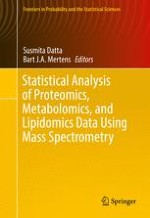2017 | OriginalPaper | Chapter
Logistic Regression Modeling on Mass Spectrometry Data in Proteomics Case-Control Discriminant Studies
Author : Bart J. A. Mertens
Published in: Statistical Analysis of Proteomics, Metabolomics, and Lipidomics Data Using Mass Spectrometry
Publisher: Springer International Publishing
Activate our intelligent search to find suitable subject content or patents.
Select sections of text to find matching patents with Artificial Intelligence. powered by
Select sections of text to find additional relevant content using AI-assisted search. powered by
